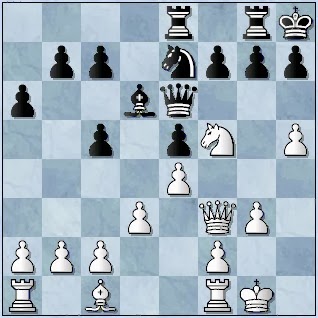I.
There is time when sitting there, looking at our pieces, we do not know what to do. There is advice mentioning that if we do not know what to do, move a pawn which i do not see the wisdom behind it at all haha. In rapid play, it is practical not to waste time so much so we just move our pieces sensibly waiting for our opponent making mistakes.
Back to the time when we do not know what to do. What should we do? What is the part of move our pieces sensibly?
I read local sites like Partzer blog by Andrew and Stonemaster.com by Fadli regularly. Andrew loves the idea of "Talking to the pieces" suggested by Rowson in his book. Fadli on the other hand has mentioned so many times (yeah, i've spotted it!) about the old rules: "Improving your worst played pieces". And maybe, we have heard about "talking to yourself, asking question!" too in the spirit of Einstein's: "The important thing is not to stop questioning".
I do not know if these are the same thing but they are good advices to improve our positional play. In fact, simple thing like this, IMHO, should be taught to all young players so they grow up with it. Once they do this unconciously, i guess they will improve.
A simple treasure. Millions dollar lesson!
II.
At Chesscafe.com, Steve Golberg has reviewed a Chessbase FritzTrainer which shows to us the Strategies of the Soviet School; namely The Secrets of The Champions by GM Adrian Mikhalchisin (here). The DVD contains lectures on certain subject of the most distinguished characteristics of each Champions of the past: Botvinnik, Tal, Petrosian and .... Makogonov!
Makogonov who? We might ask.
Let's forget about history for a while and straight to the teaching. Mikhalchisin explains to us about Makogonov's Rule or what we known as The Principle of the Worst Piece. The rule states that in a position in which there are no direct threats (from either side), it is necessary to spot the worst-placed piece, and try to improve it or exchange it. He then gives several example which you can see one of them at Steve's review.
While examining Mas' games (his being interviewed greatly moves me to do so! haha!), i arrived at this position:
Mas is white against the great Viktor Korchnoi and it is from round 9 of 37th Olympiad 2006 at Turin, Italy between Malaysia and Switzerland. It arises after 1. e4 e5 2. Nf3 Nc6 3. Bb5 a6 4. Bxc6 dxc6 5. O-O Bg4 6. h3 Bxf3 7. Qxf3 Ne7 8. c3 Ng6 9. d3 Bd6 (diagram above)
The position looks dull to those who loves the fireworks of tactics. And how to treat such position is what makes the difference between players like Mas and ordinary players. Sometimes we simply either do not know what to do, or just do a simple developing move like Be3. Anyway, curiously, i showed this position to my friend (he has completed his provision and will get FIDE rating soon at about 2000++). He has no problem to think that the knight should manoeuvre to queen's side, preferably to f5: Ne2-g3-f5. I'm positive he knows about the rule because he and i talked a great deal about the ideas before!
The game continues: 10. Ne2 c5 11. Ng3 O-O 12. Qg4 Kh8 13. Nf5 Rg8 14. h4 Ne7 15.g3 Qc8 16. Qf3 Qe6 17. h5 Rae8
18. h6 g5? At chessgames.com, there are kibitzer who wonder why black did not change the knight here or earlier and the white attack has perished or at least not deadly. And i ask the same question too. [18. ... Nxf5 19. exf5 Qf6 20. hxg7+ Qxg7 21. Re1] 19. Ng7 Qxh6?! 20. Nxe8 Rxe8 21. Qxf71-0 . Mas' win enabled Malaysia to make an upset against the stronger Switzerland 2 1/2 - 1 1/2.
I do not know if this is a good example to show as example. But i hope i have reminded myself enough to use it as part of my positional play. (Hey! This is my notebook for my chess improvement after all, haha!)
November 19, 2007
Subscribe to:
Post Comments (Atom)


No comments:
Post a Comment